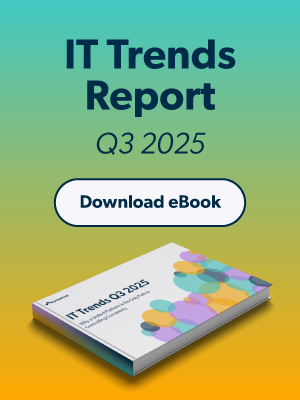Updated on February 14, 2025
Policy-Based Access Control (PBAC) is rapidly emerging as a critical component in modern cybersecurity and identity and access management (IAM). By enabling organizations to define and enforce access rules with precision, PBAC helps to address the growing complexity of managing resource access in today’s dynamic environments.
This article explores what PBAC is, how it works, and why it could revolutionize access control in your organization.
Understanding Policy-Based Access Control
At its core, PBAC is a framework that determines access rights based on pre-defined policies. Unlike Role-Based Access Control (RBAC), which grants access depending solely on roles, or Attribute-Based Access Control (ABAC), which focuses on specific attributes, PBAC evaluates access decisions using a combination of policies, attributes, and contextual information for more granular control.
Key Components of PBAC
- Policies: Policies define the rules and conditions under which access is granted or denied. For example, a policy might specify that sensitive customer data can only be accessed by senior analysts during business hours and from corporate devices.
- Attributes: PBAC evaluates access requests based on user, resource, and environmental attributes. Examples of attributes include user roles, device status, location, resource sensitivity, or time of access.
- Integration with IAM Frameworks: PBAC integrates seamlessly with IAM models and complements Zero Trust Security by enforcing “never trust, always verify” principles at every access point.
This sophisticated rule-driven approach ensures more adaptive, context-aware decision-making compared to traditional access control models.
Features of Policy-Based Access Control
Organizations adopt PBAC because it delivers a suite of powerful features aimed at simplifying access control while enhancing security and flexibility.
Centralized Policy Management
With PBAC, enterprises manage all access policies centrally through streamlined interfaces or platforms. This allows IT teams to define and enforce policies consistently across multiple resources, reducing administrative overhead and errors.
Dynamic and Context-Aware Decisions
PBAC evaluates contextual factors—such as time, geolocation, or device health—in real-time. This ensures security policies adapt to changing conditions instantly.
Scalability
PBAC can efficiently handle large-scale environments with complex user hierarchies and diverse resources. For organizations growing in size or adopting hybrid cloud infrastructures, this scalability is invaluable.
Fine-Grained Control
Minimize “over-permissioning” by granting users the least privileges needed to perform tasks. PBAC supports highly specific rules for various scenarios, reducing unnecessary exposure of sensitive resources.
Benefits of Policy-Based Access Control
Policy-Based Access Control (PBAC) offers numerous advantages that enhance security, streamline management, and improve operational efficiency.
Enhanced Security
PBAC reduces access risks by enforcing granular, context-sensitive rules. This limits unauthorized or accidental access, even during edge cases.
Regulatory Compliance
By aligning policies with standards like GDPR, HIPAA, or PCI DSS, PBAC simplifies audits and helps organizations demonstrate compliance with global regulations.
Operational Efficiency
Automated decision-making processes reduce manual intervention, freeing IT teams to focus on strategic tasks without sacrificing security.
Adaptability
PBAC aligns with evolving organizational requirements. Whether adding new resources, users, or integrating diverse technologies, PBAC remains flexible.
Challenges of Implementing Policy-Based Access Control
PBAC, like every advanced system, comes with its challenges.
Policy Creation Complexity
Defining accurate, comprehensive policies requires detailed documentation and cross-department collaboration. Poorly defined policies could inadvertently block legitimate access or create vulnerabilities.
High Initial Setup Costs
The implementation of PBAC tools or platforms, along with the necessary customization of integrations to fit specific organizational needs, typically involves significant upfront expenses. These costs can include licensing fees, setup charges, and the time and resources required for proper configuration and deployment.
Dependency on Accurate Data
To optimize PBAC’s performance, organizations must ensure they have consistent, high-quality attribute data about users, devices, and systems.
Without accurate data, the system cannot make reliable access decisions, potentially leading to security risks or operational inefficiencies. Regular data audits and validation processes are critical to maintaining this accuracy.
Balancing Convenience and Security
Over-restrictive access policies can frustrate users and hinder productivity, especially in fast-paced work environments. However, overly lenient policies may expose sensitive resources to unnecessary risks.
Striking the right balance requires a thoughtful approach to policy design, allowing users to work efficiently while ensuring that security is never compromised.
How to Implement Policy-Based Access Control
Deploying PBAC requires a structured approach to ensure optimal results.
1. Define Policies
Start by identifying business processes and the specific conditions that should govern access to resources. For example, determine which departments or teams require access to particular tools, data, or applications to perform their roles effectively.
Ensure these policies align with your organization’s overall security and compliance goals. Clearly define what constitutes authorized access and set boundaries for different user groups.
2. Gather Attributes
Collect and integrate detailed information about users, such as their roles, departments, and levels of seniority. Incorporate device statuses, including whether a device is company-issued or personal and its security compliance.
Additionally, consider environmental factors like location, time of access, or network security. These attributes help create a comprehensive policy framework that adapts to varying contexts.
3. Select The Right Platform
Evaluate platforms and tools that best fit your organizational needs. Modern IAM platforms offer robust features for policy-based access control (PBAC). Choose a solution that integrates seamlessly with your existing systems and provides flexibility for scaling as your organization grows.
4. Test Policies
Before applying policies organization-wide, deploy access control rules in controlled test environments. This allows you to identify and resolve any conflicts, gaps, or unintended restrictions.
Testing ensures that the policies function as intended and do not disrupt day-to-day business operations.
5. Monitor and Refine Policies
PBAC policies should not remain static. Continuously monitor their effectiveness and identify areas for improvement.
As new risks emerge, employee roles change, or operational needs evolve, policies need to adapt. Regularly review and update them to ensure ongoing security and usability, maintaining alignment with your organization’s objectives and compliance requirements.
Best Practices to Consider
- Conduct regular policy audits to validate efficiency and security.
- Collaborate across departments to ensure policies meet both security and business requirements.
- Use automation tools to reduce human error and maintain consistency.
Real-World Applications of Policy-Based Access Control
Sensitive Data Protection in Financial Services
Financial institutions can leverage PBAC to grant access to sensitive customer or trading data only to authorized personnel under specific conditions, like location or time.
Dynamic Remote Work Policies
Organizations managing remote teams can enforce rules based on geolocation, ensuring that remote workers access systems securely from authorized regions.
Hybrid Cloud Resource Management
Enterprises adopting hybrid environments (on-premises and cloud) use PBAC to standardize access policies across diverse technologies and platforms.
Policy-Based Access Control isn’t just an advanced tool for managing access—it’s a vital part of modern cybersecurity architecture. Its flexibility, dynamic capabilities, and granular control position it as a critical component for organizations adopting Zero Trust models or handling sensitive workflows.
Frequently Asked Questions
What is Policy-Based Access Control?
Policy-Based Access Control (PBAC) is a security framework that manages access to resources based on defined policies rather than roles or attributes alone. Policies typically consider multiple factors, such as user identity, context, and conditions.
How does PBAC differ from RBAC and ABAC?
PBAC differs from RBAC by focusing on policies instead of static roles and from ABAC by using comprehensive policies that can include roles, attributes, and contextual conditions.
What are the key benefits of Policy-Based Access Control?
PBAC provides granular control, flexibility, and adaptability by allowing access decisions based on dynamic policies, improving both security and compliance.
What are the challenges of implementing PBAC?
Implementing PBAC can be complex due to the need for clear policy definition, managing policy conflicts, and ensuring scalability across large systems.
What tools are commonly used for PBAC?
PBAC is commonly supported by tools that enable policy creation, management, and enforcement, often integrating with broader identity and access management systems.





